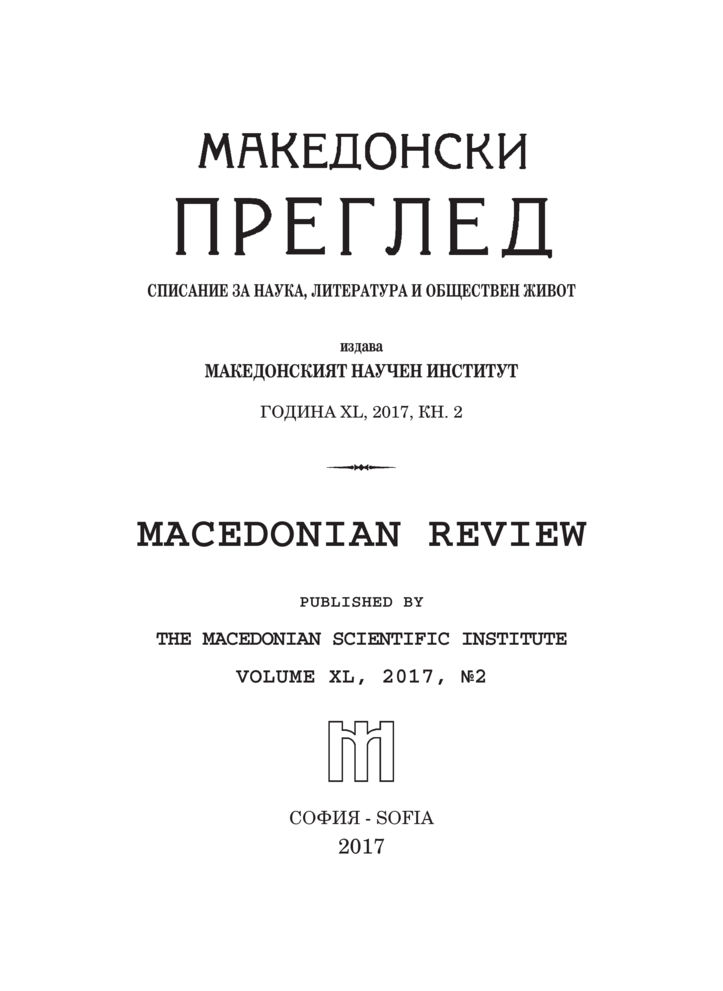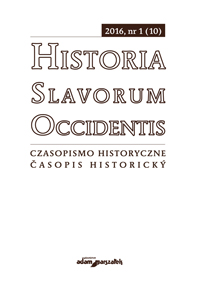
We kindly inform you that, as long as the subject affiliation of our 300.000+ articles is in progress, you might get unsufficient or no results on your third level or second level search. In this case, please broaden your search criteria.




The article reveals the lifespan and professional activity of a well-known poltavian, professor VolodymyrShchepotiev. He is highly acknowledged in history as a talented pedagogue, who experienced the growth from a teacher of the Ukrainian literature to the professor, rector of Poltava institution of Folk Education. Being a person with encyclopedic knowledge, as well as being keen on the history of the Ukrainian language and folklore V. O. Shchepotiev applied the folklore patterns and samples in his work. V. O. Shchepotiev was a talented scholar, researcher, and organizer of scientific lifestyle of the region. He wasthe first who initiated establishing of Poltava scientific society, was on good terms with Ukrainian Academy of Science in Kiev, as well as with scientific establishments in Kharkiv. He was the one who organized and subsequently maintained the regional archive while systematizing documents and ordering personal archives. Professor initiated the onset of local history investigations. He personally headed the department of folklore and language in regional museum and at that time he developed the structures of expositions, and systematized the museum collections. He would numerously visited the villages of Poltava to discover historical and cultural as well as ethnographical items and to convert them into museum display objects. V. O. Shchepotiev played an extremely significant role in establishing and developing the theatre and music arts in Poltava region. He was in charge of one of the part of Poltava drama theatre and was one of the talented stage director. He gave his educational lectures to people before the concert programs of the choir "Boyan" which were devoted to folklore and local history. The contemporaries would estimate V. O. Shchepotiev’s music talent, who wrote music compositions, played different music instruments. He, ultimately, was the first who started the scientific investigation of M.V. Lysenko’s biography and creative heritage. The translations of poetry and prose from French, Polish, in particular the poetry by Beranger, libretto for several operas composed an integral part of his literary heritage. His creative and scientific activity was broken down with political repression of the power of the Soviet Union. He was arrested and convicted to administrative exile according to a trial case of SVU and afterwards he was shot away in 1937.
More...
The paper aims to present both complex nature and multiple origins of deepseated conflict with reference to validity of Central European medieval state model. The author emphasizes that the discussion on early medieval forms of state on territories of contemporary Czech Republic, Moravia, Poland, Slovakia or Hungary may be continued only on international scholarly forum that eliminates all socio-political factors (see Feyerabend) influencing the development of scientific theory and method. The origin of narrative framework for understanding and creating the Central European medieval state model should be linked with Polish authors. In contemporary Polish historiography that issue is being raised again. Thus we may expect that return of that subject of research would provide us a wider framework for scientific cooperation between Polish and Czech medieval history studies.
More...
The article focuses on the activity of the Institute in the first decade of the 21st century.
More...

The intensity of scientific contacts between the countries is evidenced, inter alia, in the make-up of the foreign members of the academy of sciences of a given country. In the case of the Academy of Learning in Kraków, later the Polish Academy of Learning (PAU) and the Czech Academy of Sciences and Arts (ČAVU), the relations have been thoroughly investigated by a Czech historian M. Ďurčanský. As regards the relationships in the field of medicine, a mutual membership of a group of foreign members of PAU and ČAVU was uncommon, a notable example being Rudolf Kimla, the professor of the Faculty of Medicine at Charles University in Prague. Kimla was renowned for his work for the development of cooperation within the Slavic medical milieu, which was fostered by Slavic doctor conventions. Kimla’s appointment as a foreign member of PAU (1935) followed his participation in a congress of Slavic doctors held in Poznań in 1933.
More...
The study of documents and material published show that most saint houses of the Balti County occurred in the second half of the 18th Century, being built of wood in villages with old traditions. In Balti city Saint Houses have started to build similar neighbouring village-made of wood, and later of stone. It talks about the history of the church in Slobozia-Balti (1888), which first was built from wood, possible built until 1742, the year shown on stone cut , found during excavations in the yard of the church, with the nomination of authors
More...


Nagy Péter: A Rima vonzásában. Az ózdi helyi és gyári társadalom a késő dualizmustól az államosításig. Napvilág Kiadó, Budapest, 2016. 384 oldal.
More...
The present article focuses on the so called crypto-Catholicism from the early modern Ottoman Albania, as documented by the missionary accounts, which are practically the only available sources for studying this phenomenon. Using the twin concepts of simulation and dissimulation of faith, as defined in the normative texts of the Roman Curia, our goal is to analyse and contextualize the various practices linked to the occultation of faith. We investigated especially the way(s) in which the Roman clergy, both local and central, addressed such delicate and uncomfortable issues. Our conclusion is that, unlike the Roman Curia (i.e. Propaganda Fide or the Sacred Office), which constantly and inflexibly discouraged such practices, the local clergy tended to regard them more indulgently and on a rather pragmatic basis.
More...
In this article we would like to analyse the so-called ceremonial-type potteries (hanging anthropomorphic amphoras, pedestalled cups, Ossarn-type cups, rhyton, churns: bottle, painted potteries, bipartite bowls) of Balatonőszöd-Temetőidűlő (settlement of Baden culture, Hungary, Transdanubia) with the connection of sacrificial features and magical objects.
More...
A presentation of “City Planning of Sofia. The Pulse of the City in Time”
More...
The research completes the news received up to now on the resav spelling, representing a memorial which was probably created in Pchin Monastery - „Saint Prohor of Pchin".
More...

